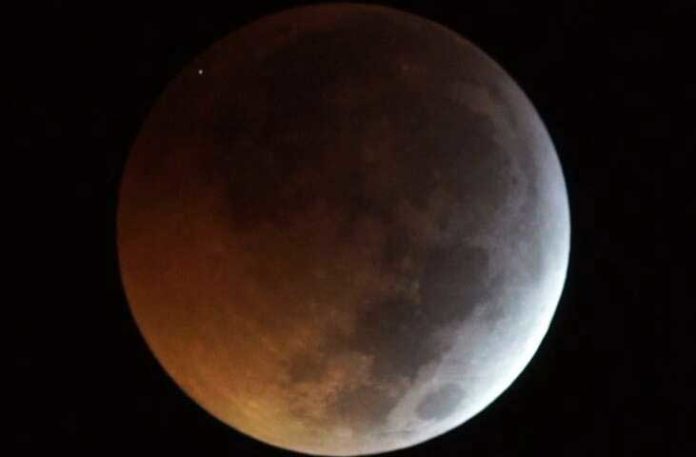A total lunar eclipse occurred on January 21, 2019. The Moon was near its perigee on January 21 and as such can be described as a “supermoon”. Observers who watched this eclipse, also saw a rare event of a short-lived flash as a meteorite hit the lunar surface.
According to Spanish astronomers, this rare event is nothing but the space rock that collided with the moon at 61,000 km an hour, excavating a crater 10 to 15 meters across.
As this supermoon was also a wolf moon (the first full moon in a calendar year), it was referred to as a “super blood wolf moon”; blood refers to the typical red color of the Moon during a total lunar eclipse.
Just after the total phase of the eclipse began, a flash was seen on the lunar surface. Widespread reports from amateur astronomers indicated the flash – attributed to a meteorite impact – was bright enough to be seen with the naked eye.
Live streaming by the Moon Impacts Detection and Analysis System (MIDAS), detected that the flash lasted for 0.28 seconds and is the first ever filmed during a lunar eclipse, despite a number of earlier attempts.
Prof. Jose Maria Madiedo of the University of Huelva said, “Something inside of me told me that this time would be the time, as it was brighter than most of the events regularly detected by the survey.”
Observing the flash at multiple wavelengths, Madiedo and Dr. Jose L. Ortiz of the Institute of Astrophysics of Andalusia, conclude that the incoming rock had a mass of 45kg, measured 30 to 60 centimeters across, and hit the surface at 61,000 kilometers an hour.
Scientists survey the impact energy as equivalent to 1.5 tonnes of TNT, enough to create a crater up to 15 meters over, or about the measure of two twofold decker buses next to each other. The trash ejected is assessed to have achieved a peak temperature of 5400 degrees Celsius, generally equivalent to the surface of the Sun.
Madiedo comments: “It would be impossible to reproduce these high-speed collisions in a lab on Earth. Observing flashes is a great way to test our ideas on exactly what happens when a meteorite collides with the Moon.”
Now, scientists are planning to continue monitoring meteorite impacts on the lunar surface, not least to understand the risk they present to astronauts, set to return to the Moon in the next decade.
Scientists have published their results in a new paper in Monthly Notices of the Royal Astronomical Society.
